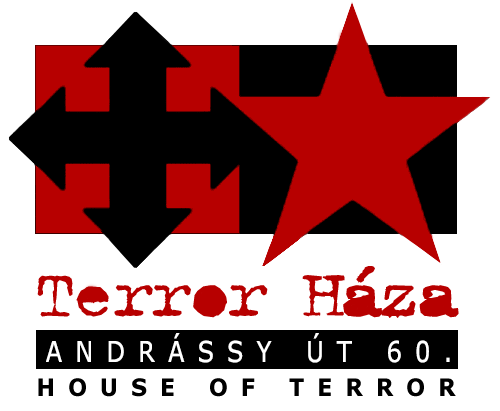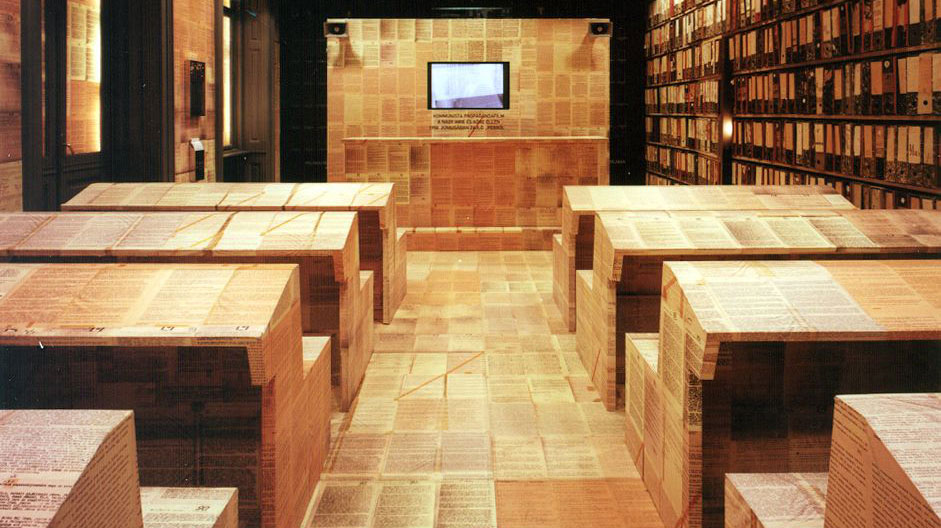Monitors placed on the doors show documentaries about persecuted and imprisoned members of the clergy. Relics pertaining to the fate of the various persecuted are on display in the booths. The large, grey loudspeakers in the background recall the period's blaring propaganda; they emitted the veritably "ungodly" regime's "crusade" in public places.
“Every prelate, gendarme, industrialist and landowner worships money, power, wealth, murders the people, hates our homeland and loathes peace.”
Szabad Nép (Free People), the dictatorship’s daily newspaper, 1950
The communists saw religion as the “opium of the people”. While establishing their dictatorship they began to attack churches, monastic orders and their institutions, schools, hospitals and monasteries. Church leaders who resisted were forcibly removed from their posts, arrested and dragged through the mire.
Many died under interrogation, while others received long prison sentences. After the Reformed, Unitarian, Evangelical and Jewish congregations, the Catholic Church was the last to be forced to sign an agreement ending its autonomy.
The greatest domestic and international outcry was caused by the trial, torture and imprisonment of Cardinal József Mindszenty, Archbishop of Esztergom. The revolutionaries freed Mindszenty from his captivity in 1956. After the crushing of the Revolution, as head of the Hungarian Catholic Church he sought – and was granted – asylum at the US Embassy in Budapest. He spent the last four years of his life in the West, and his remains were returned to Hungary in 1991.
The churches only regained their autonomy in 1990.













